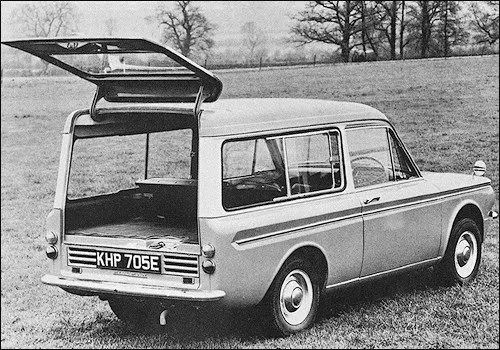DO YOU REMEMBER – THE HILLMAN IMP HUSKY?
10 October 2022
You might occasionally find yourself glancing at a bygone street scene, only to suddenly notice a car almost entirely vanished from our roads. It could be a Yugo Sana or a Rover 623 from a 1990s image, or possibly a Vauxhall Belmont or a Peugeot 305 from a 1980s photo. And, when I recently saw a shot of Southampton’s long-gone Bedford Place coach station circa 1972, there was an especially notable vehicle in the foreground - the Hillman Imp Husky.
During the 1970s, the estate version of the Imp was not a particularly familiar presence. In fact, the only time I can recall seeing one in the metal during my distant youth was the bronze-coloured example that was a school-run regular. The Rootes Group unveiled it in spring 1967, four years after the launch of the original saloon, and production lasted only until 1970. Yet, it offered a great deal to the discerning motorist and was the only British-built rear-engine estate car of its generation.

Rootes’ original plans for an Imp station wagon involved new bodywork, but this was beyond their financial resources. So instead, they used the ‘Commer Imp Van’ , which debuted in September 1965, as a basis, equipping it with sliding windows and a rear seat. Unlike the commercial vehicle, the Estate was not powered by a detuned engine. At the same time, keen drivers appreciated the radial-ply tyres, uprated rear shock absorbers and rear springs, together with strengthened wishbones and trailing arms from the Sunbeam Imp Sport. As for the name, the company first used ‘Husky’ for its 1954-1965 range of SWB Hillman Minx-derived utility vehicles.
Autocar tested the latest Imp variant in 1967. They noted, “At first sight the Husky’s rather upright look appears to be a throwback, but as acquaintance grows, one appreciates its great economy and load carrying capabilities, the lusty little engine, excellent steering and its ‘ready and willing’ attitude to any work. It is not so easy to design an effective estate car on a rear engine layout, but Rootes have done the job in a practical sensible way”. They also observed, “The new Husky in fact has no less performance than the Hillman Super Imp which we tested in October 1965 and it is in some instances a little quicker”.
At £630 8s, the Husky was slightly cheaper than the Austin Mini Countryman/Morris Mini Traveller, which cost £648, offered a capacious 50 cu ft. load bay, and was highly entertaining to drive – yet production lasted barely three years with under 11,000 examples departing the Linwood words. One probable reason is that by 1967, Chrysler was taking increasing control of the Rootes Group (the famous name would vanish in 1970) and had no apparent interest in developing the Imp family.
Today, seeing a Husky at a show is to be reminded of their versatility and quite considerable charm. Watch out for a comparison between the Hillman and its BMC rival at a later date…
